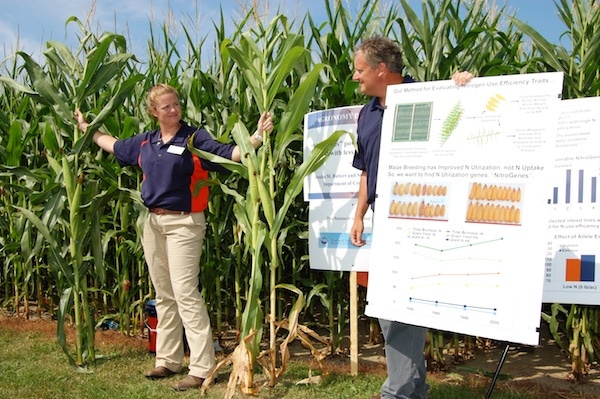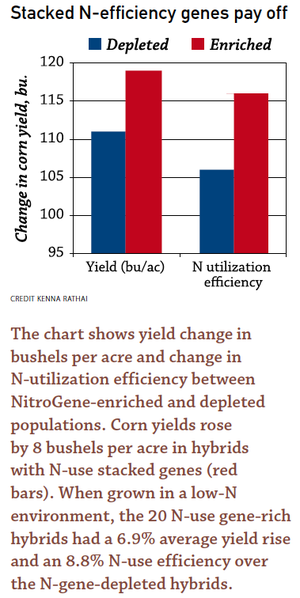November 1, 2013

The search is on for a super line of corn that powers more yield with less nitrogen. It’s been more than 10 years in the making, but researchers have identified nine genes in corn important for nitrogen-use efficiency. These “NitroGenes” have been shown to impact traits such as stover nitrogen content, grain nitrogen concentration and kernel number. And that can translate to higher yields with fewer nitrogen applications.
“We’ve been researching genomics with the goal of improving complex traits starting at the molecular level since 1999,” says Stephen Moose, University of Illinois professor of maize functional genomics. “Recent advances in functional genomics, especially the corn-genome sequencing in 2009, have accelerated research and allowed a targeted approach to improving nitrogen utilization, he adds.
Increasing yields through better nitrogen utilization and lower nitrogen inputs are increasingly important because of greater environmental and economic concerns these days. According to the University of Illinois department of Crop Sciences, nearly 5 million tons of nitrogen fertilizer are applied annually to the corn crop worldwide.
While grain yields have increased due to modern elite hybrids’ superior tolerance to higher plant densities, greater harvest index, reductions in grain-protein concentration and optimized N uptake, there are still big opportunities to further improve how corn uses nitrogen, Moose says. (Corn’s harvest index is grain yield divided by the total grain plus stalks/leaves, so it means higher yields. The N harvest index (amount of nitrogen in grain versus total nitrogen in whole plant) has increased in modern hybrids.

The 2012 field trials reviewed two separate populations – 20 lines with the highest number of favorable NitroGenes, termed “enriched,” and 20 lines with the lowest number, termed “depleted”. These populations represent the theoretical changes that could be made when selecting for changes in these nine NitroGenes simultaneously, says Jessica Bubert, one of Moose’s graduate students.
“We saw a 6.9% yield increase with the enriched hybrids,” Bubert says. “They produced an 8.8% increase average nitrogen utilization when grown with either low or high levels of nitrogen.”
Like what you're reading? Subscribe to CSD Extra and get the latest news right to your inbox!
The research team is cross breeding to create a super line with all nine NitroGenes, as well as screening a broader spectrum of elite germplasm to see if any lines may already have the full suite of favorable NitroGenes.
“Research results are showing that our strategy to stack these NitroGenes is a viable option for improving nitrogen-use efficiency and corresponding yield,” Bubert says. “Our hope is that it eventually can be translated to commercial germplasm.”
About the Author(s)
You May Also Like




